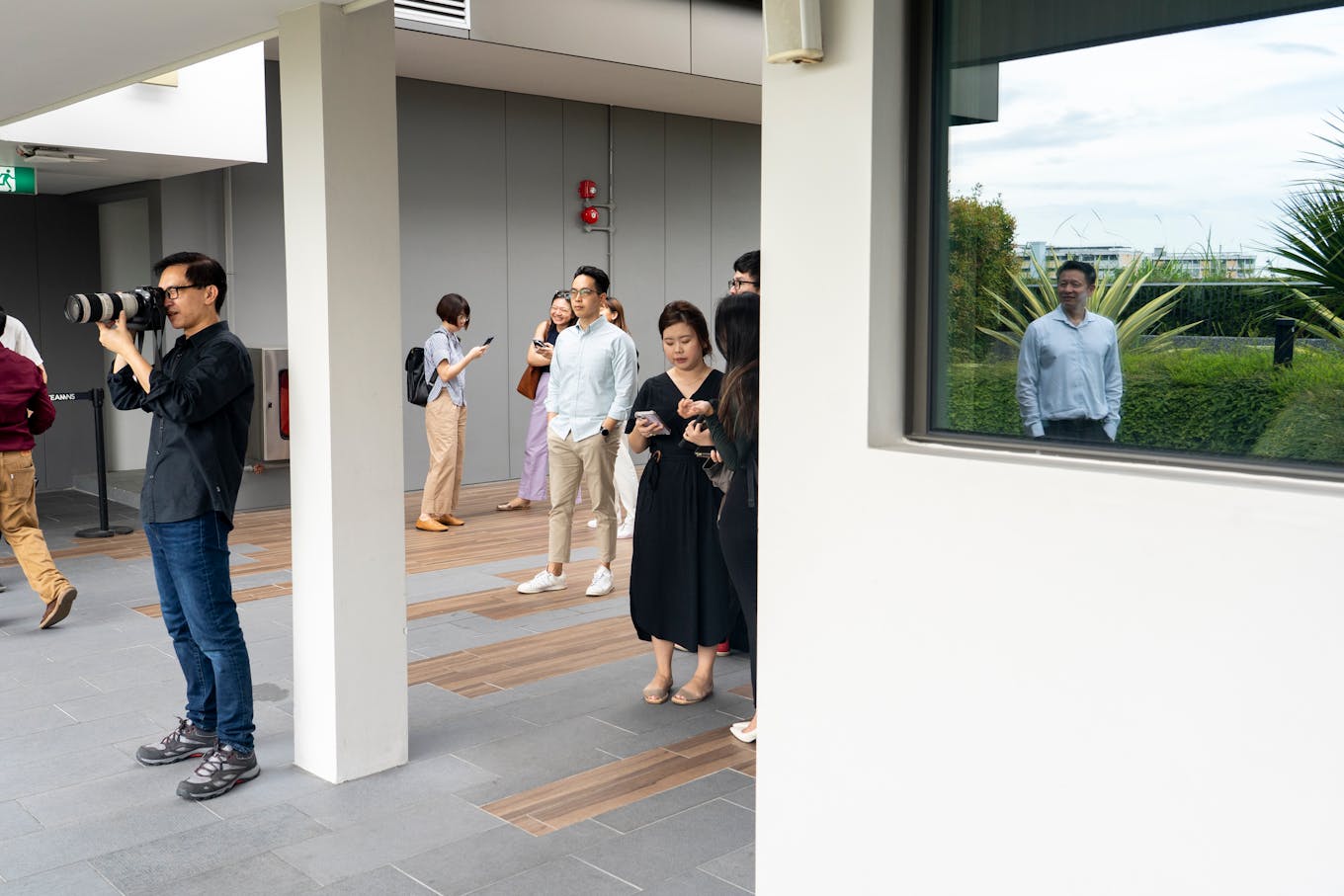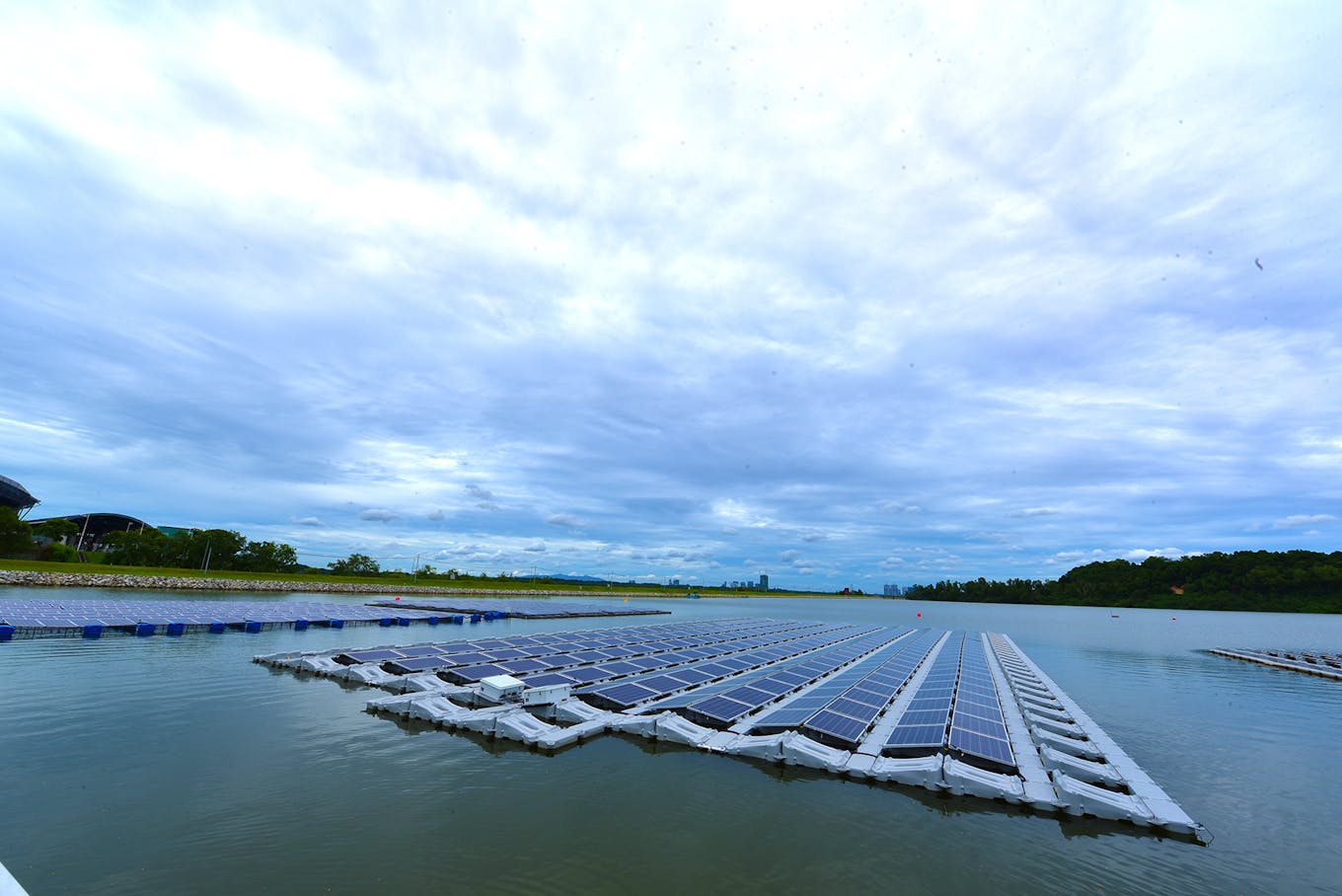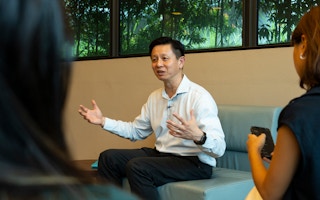While the rise of corporate chief sustainability officers has been well-documented, hardly anyone has heard of such a role within national governments. So interests were piqued, and some eyebrows raised, when Singapore announced the appointment of its first government chief sustainability officer late last year.
To continue reading, subscribe to Eco‑Business.
There's something for everyone. We offer a range of subscription plans.
- Access our stories and receive our Insights Weekly newsletter with the free EB Member plan.
- Unlock unlimited access to our content and archive with EB Circle.
- Publish your content with EB Premium.
Lim Tuang Liang, the appointee, is to drive national efforts, such as the Singapore Green Plan 2030, a blueprint of the city-state’s near-term sustainable development agenda. The 51-year-old is to help agencies with sustainability reporting in the coming years, while speaking to businesses about partnerships. Singapore’s public sector wants to reach net-zero emissions by 2045, ahead of the national target to do so by 2050.
The announcement has invited mixed reactions from the public. Some hailed the move as unprecedented and looked forward to the change it could bring about, while there were others who questioned if the role was redundant, and if Lim truly understood on-the-ground issues. Many news outlets have also asked to speak with Lim since his appointment.
In an hour-long chat with journalists, organised by the sustainability and environment ministry (MSE), where the government chief sustainability officer, or GCSO, role is housed under, Lim explains why the Singapore public sector needs a CSO for better coordination across different agencies. The former air force officer and MSE’s chief science and technology officer also gave the key traits of what he thinks makes a good CSO – the individual should be a strategist, an innovator and a communicator – though he demurred when asked to rate his own abilities.
Too soon to do so, he said, having only been in office for just four months.
Here are more thoughts and insights shared by Lim on how he intends to shape the new role and contribute to driving the government’s sustainability efforts.
What have you done in the past four months?
Internally I’ve reached out to many of the other agencies to understand the issues that they face. We will continue to do that and also analyse the challenges to see if there are interventions from our end to help these agencies.
By addressing their challenges, we can also understand the challenges that the rest of society face.
We have also reached out to many of our corporate partners to share ideas and point them to the right agencies.
How does your background as MSE’s chief science and technology officer help your new role?
In those two years, I spent a lot of time working with agencies and understanding technologies associated with water treatment, waste, Wolbachia [a bacteria for reducing mosquito population by making them infertile], and agri-technology.
These formed a foundation for my new role as the GCSO. There are a lot of things that we need to change. Beyond policies and behaviours, we need to look at actual implementation of technologies, some of which are nascent.
It is through this lens of technology development and assessment that I work with sustainability officers in other agencies, to discuss ways to help different industry sectors, which are facing different challenges, move forward. We have to look at real, practical and implementable measures to improve our sustainability performance. We have to be pragmatic and look at how to adopt solutions while preserving value, because cost is still an underlying concern.
To what extent is the government willing to absorb green premiums for the cost of sustainability solutions to come down?
We have not priced a specific premium. What we are doing with government procurement is looking at how we can help sustainable products and services gain an advantage. We are doing so in two sectors at the moment – construction and infocomm technology – because these are large expenditures and there are significant opportunities for emissions reduction.
You might see that there may be a premium or a higher price that we are willing to pay when we put together an overall portfolio. But as to how much the premium is, I have to let the market determine that. It is not something I can give a specific figure on.
How effective are private-sector CSOs in Singapore today? What kind of example do you want to set?
I think all CSOs are effective. The fact that a company has appointed a CSO is a clear sign that they take sustainability seriously.
I think a CSO needs to be an expert in the field of sustainability, because there are constantly new technology, new regulations, new trends [to track]. The CSO needs to be able to advise on these changes.
The CSO needs to be a strategist and decide: how do you integrate sustainability into the larger company strategy?
The CSO is also a communicator and influencer. Not only are you influencing the leadership, you have a role in influencing the rest of the organisation, [in advising] individuals on rebalancing the trade-offs [in pursuit of sustainability].
The CSO needs to be an innovator who is willing to challenge the status quo, to think about solutions.

Lim Tuang Liang (right, in reflection), posing for photographs after speaking with the press. Image: Eco-Business/ Liang Lei.
Do you feel that your position is equivalent to a C-suite leader, and gives you sufficient purview to fulfil your mandate?
Certainly. The GCSO sits in meetings, have deep discussions with our [sustainability and environment] ministers. These are at the highest level. Otherwise sometimes you get secondhand information and you wouldn’t be as effective in influencing the sustainability agenda.
Is your role a subset of that of the ministers in MSE? How does it differ from what they do?
Certainly…MSE addresses the broader sustainability agenda, and the MSE ministers are also leading other ministries’ sustainability agendas. Within the ministry, we have our specific functions, such as those focused on water, waste, dengue, and food. This is a wide scope.
For me, there are key performance indicators in the broader government performance, in terms of sustainability – emissions, water, waste management – to help to reach targets and monitor the progress of the Singapore Green Plan and our 2050 net-zero commitment. Along the way where there are challenges, I need to provide support to the agencies.
It sounds like you are here to make the Green Plan succeed…is that correct?
[Laughs] The Singapore Green Plan is put out by five main ministries [sustainability and environment, transport, national development, education, as well as trade and industry]. Each of them have specific functions. In the implementation of those functions, there may be areas that require better coordination, in which the government CSO will step in.
It does not mean that the government CSO is the one bringing everything together. Sustainability is wide and it requires all hands on deck. Beyond the five ministries, the other agencies have their sustainability targets too.
As I work on this, the government also get to be better-informed about the challenges that businesses face. These could be related to regulations, technology adoption or cost.
The role is hence also external facing, it is the partnerships with corporations and citizens that will allow Singapore to reach our goals.
The work is akin to directing mustangs. People are moving but in slightly different directions, but all towards a good cause, all at top speed. Sometimes you just need to align them to amplify the effect. And that is not just within the government. We will work with companies willing to put in resources, individual citizens with great ideas, communities…
Which government agencies need more support from MSE to reach their sustainability targets?
Interestingly, some of the bigger emitters within the government lie within the MSE fold. The public utilities board, for example, uses a lot of energy in wastewater treatment, and of course in desalination. The national environment agency oversees our incineration plants, which are significant emitters in the overall government account.
The two agencies are working hard to find solutions to reduce emissions. The public utilities board has started placing solar panels in our reservoirs. They are also working with a technology company to look at extracting carbon dioxide from the sea. At Tuas Nexus [water and waste management facility], waste-to-energy conversion allows us to optimise processes and save energy.

Floating solar panels in a reservoir in Singapore. Image: Solar Energy Research Institute of Singapore.
Is a 2050 net-zero target for Singapore realistically achievable, or more aspirational?
You cannot underestimate the power of human innovation. I think it all starts with aspiration. But with that aspiration comes the intense focus of industries, technologies and governments to deliver on the goal.
I think we are on the right path with clear targets and implementable steps through the Singapore Green Plan. We are already implementing the solutions that are practical. We are keeping a very close watch on other [emerging] technologies. That’s why we are investing in pilots, trials, and small projects.
Can you elaborate more on concrete targets and deliverables for the role, so that you can avoid being called a figurehead?
I hope that I have impressed upon you that I am not just a figurehead. I think that the GCSO role is an affirmation of the fact that the government is really serious in terms of implementation. It also recognises that there are a multitude of challenges associated with [achieving our sustainability goals].
These challenges are across agencies, and we need system-level solutions for change to happen. This is why the GCSO role was created.
What is your understanding of the less technical, more intersectional aspects of sustainability in culture, justice and how climate change affects vulnerable groups? Do you have to deal with these issues?
I think it is in every fibre of the Singapore government, all the agencies, that as we move forward, we leave no man behind. It is important that we balance some of these challenges.
For example, when we implement the [upcoming, 5-cent] plastic bag charge, [we will need to make sure that] we have the resources to help low-income families with their cost of living. We are not looking at schemes individually. They are all inter-related.
It is important for us as a government to take into account all the needs of our citizens and corporations, big and small, to move together with them in lockstep, at a pace society is ready for.
In areas where we think there are solutions, we can inform and educate, to get collective buy-in. We then provide resources and expertise to help those who need a little more assistance.
Personally, what is one significant change you’ve made this year that is sustainable?
I have organised my schedule such that there are days I can just take public transport. It is a small step. There are days when I still drive, because as a coordinator, I need to travel around. I think it is about balance and taking a pragmatic approach.
Generally I take public transport about one to three days a week. Perhaps when things stabilise, then I can drive less.
The article has been edited for clarity and brevity.










